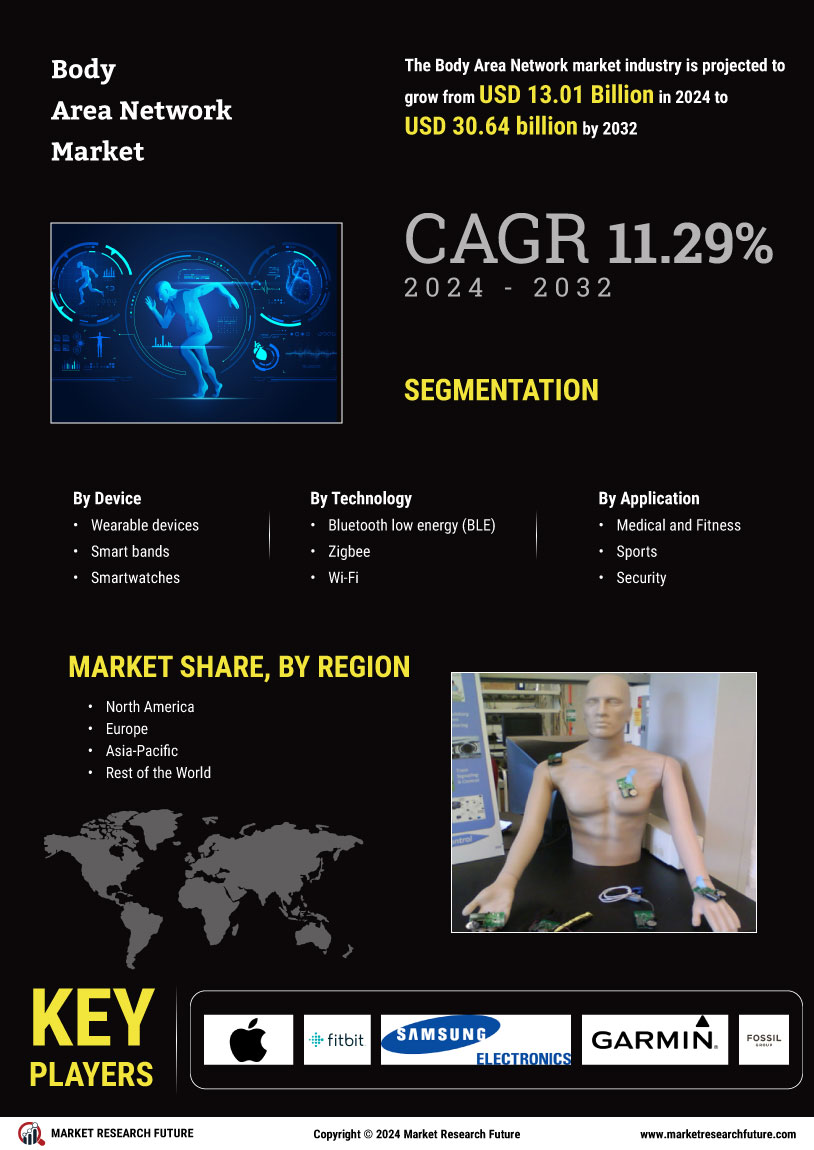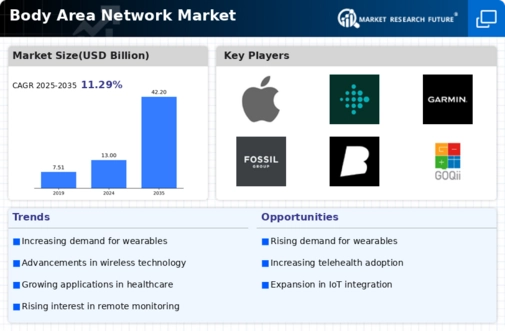Growing Focus on Preventive Healthcare
The Body Area Network Market is witnessing a growing focus on preventive healthcare, which is reshaping the landscape of health management. As healthcare systems shift from reactive to proactive approaches, there is an increasing emphasis on early detection and prevention of diseases. This paradigm shift is driving the adoption of Body Area Networks, which enable continuous monitoring of health parameters. By leveraging these networks, healthcare providers can identify potential health issues before they escalate, thereby reducing treatment costs and improving patient outcomes. Market analysis suggests that the preventive healthcare segment is expected to grow significantly, with investments in technologies that support early diagnosis and intervention. This trend is likely to bolster the Body Area Network Market, as stakeholders recognize the value of proactive health management.
Rising Demand for Remote Patient Monitoring
The Body Area Network Market is experiencing a notable surge in demand for remote patient monitoring solutions. This trend is largely driven by the increasing prevalence of chronic diseases, which necessitate continuous health monitoring. According to recent estimates, the number of individuals with chronic conditions is projected to reach 1.5 billion by 2025. Consequently, healthcare providers are increasingly adopting Body Area Networks to facilitate real-time data collection and analysis, thereby enhancing patient care. The integration of these networks allows for timely interventions, reducing hospital readmissions and improving overall health outcomes. As a result, the Body Area Network Market is poised for substantial growth, with investments in innovative technologies that support remote monitoring solutions.
Technological Advancements in Wearable Devices
Technological advancements in wearable devices are significantly influencing the Body Area Network Market. The proliferation of smart wearables, such as fitness trackers and smartwatches, has led to an increased interest in health monitoring applications. These devices are equipped with advanced sensors that can track vital signs, physical activity, and other health metrics. Market data indicates that the wearable technology segment is expected to grow at a compound annual growth rate of over 20% through 2025. This growth is attributed to the rising consumer awareness regarding health and fitness, as well as the convenience offered by these devices. As manufacturers continue to innovate and enhance the functionality of wearables, the Body Area Network Market is likely to expand, catering to a broader audience seeking health management solutions.
Increasing Investment in Healthcare Infrastructure
Increasing investment in healthcare infrastructure is a critical driver for the Body Area Network Market. Governments and private entities are recognizing the importance of modernizing healthcare facilities to accommodate advanced technologies. This investment is essential for the implementation of Body Area Networks, which require robust infrastructure to support data transmission and connectivity. Recent reports indicate that healthcare spending is projected to grow at a rate of 5% annually, with a significant portion allocated to technology upgrades. As healthcare systems evolve, the demand for Body Area Networks is expected to rise, driven by the need for efficient data management and improved patient care. This trend underscores the importance of infrastructure development in facilitating the growth of the Body Area Network Market.
Integration of Artificial Intelligence in Healthcare
The integration of artificial intelligence (AI) in healthcare is emerging as a transformative force within the Body Area Network Market. AI technologies are being utilized to analyze vast amounts of health data collected through Body Area Networks, enabling more accurate diagnostics and personalized treatment plans. The ability to process and interpret data in real-time enhances decision-making for healthcare providers, leading to improved patient outcomes. Market projections indicate that the AI in healthcare market is expected to reach USD 45 billion by 2026, reflecting the growing reliance on data-driven solutions. As AI continues to evolve, its application within the Body Area Network Market is likely to expand, fostering innovation and efficiency in health management.
















Leave a Comment